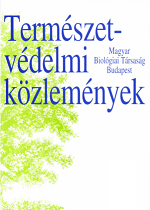Seed dispersal on human clothing: options for prevention and control
Abstract
In recent years, human-vectored seed dispersal has become a major way of the spreading of invasive species. This process especially threatens isolated habitats with high ecological value that are regularly visited by tourists. Biosecurity measures play an important role in preventing human-vectored seed dispersal. In this study, we reviewed possible biosecurity measures such as education, self-regulation, legislation, quarantine measures, monitoring, surveillance, and visitor management. Our results show that most biosecurity regulations are applied in Antarctica, Australia, and the islands of Oceania. We provide examples for the possible applications of these biosecurity measures in Hungary. Further information and measures are needed, especially in regions where no biosecurity measures are in effect to prevent the spreading of invasive species via human vectored dispersal.
References
Ansong, M., Pickering, C. (2014a): Weed seeds on clothing: a global review. Journal of Environmental Management 144: 203–211. https://doi.org/10.1016/j.jenvman.2014.05.026
Ansong M., Pickering C. (2014b): Weed hygiene: What do we do with seeds we find on our clothing? 19th Australiasian Weeds Conference – Science, Community and Food Security: the Weed Challenge. Tasmania, Australia.
Ansong, M., Pickering, C. (2016): The effects of seed traits and fabric type on the retention of seed on different types of clothing. Basic and Applied Ecology 17(6): 516–526. https://doi.org/10.1016/j.baae.2016.03.002
Auffret, A. G., Cousins, S. A. (2013): Humans as long-distance dispersers of rural plant communities. PLoS One 8(5): e62763. https://doi.org/10.1371/journal.pone.0062763
Bullock, J. M., Bonte, D., Pufal, G., da Silva Carvalho, C., Chapman, D. S., García, C., Matthysen, E., Delgado, M. M. (2018): Human-mediated dispersal and the rewiring of spatial networks. Trends in Ecology & Evolution 33(12): 958–970. https://doi.org/10.1016/j.tree.2018.09.008
Csecserits, A., Jakab, G., Rédei, T. (2021): Új adventív faj Magyarország flórájában: az útifűlevelű kígyószisz (Echium plantagineum). Kitaibelia 26(2): 199. https://doi.org/10.17542/kit.26.199
Csiky, J., Baráth, K., Barna, P., Csikyné Radnai, É., Deme, J., Szigetvári, Cs., Wirth, T., Kovács, D. (2020): Pótlások Magyarország edényes növényfajainak elterjedési atlaszához X. Kitaibelia 25(1): 101–106. https://doi.org/10.17542/kit.25.101
Dobay, G., Dobay, B., S-Falusi, E., Hajnáczki, S., Penksza, K., Bajor, Z., Lampert, R., Bak, G., Wichmann, B., Szerdahelyi, T. (2017): Effects of sport tourism on temperate grassland communities (Duna-Ipoly National Park, Hungary). Applied Ecology & Environmental Research 15: 457–472. https://doi.org/10.15666/aeer/1501_457472
Hall, C. M., James, M., Wilson, S. (2010): Biodiversity, biosecurity, and cruising in the Arctic and sub-Arctic. Journal of Heritage Tourism 5(4): 351–364. https://doi.org/10.1080/1743873X.2010.517845
Hall, C. M. (2011): Biosecurity, tourism and mobility: institutional arrangements for managing tourism-related biological invasions. Journal of Policy Research Tourism, Leisure and Events 3(3): 256–280. https://doi.org/10.1080/19407963.2011.576868
Healy, A. J. (1943): Seed dispersal by human activity. Nature 151(3822): 140.
Huiskes, A. H., Gremmen, N. J., Bergstrom, D. M., Frenot, Y., Hughes, K. A., Imura, S., Ware, C. (2014): Aliens in Antarctica: assessing transfer of plant propagules by human visitors to reduce invasion risk. Biological Conservation 171: 278–284. https://doi.org/10.1016/j.biocon.2014.01.038
Hughes, K. A., Convey, P. (2010): The protection of Antarctic terrestrial ecosystems from inter-and intra-continental transfer of non-indigenous species by human activities: a review of current systems and practices. Global Environmental Change 20(1): 96–112. https://doi.org/10.1016/j.gloenvcha.2009.09.005
Jay, M., Morad, M., Bell, A. (2003): Biosecurity, a policy dilemma for New Zealand. Land Use Policy 20(2), 121–129. https://doi.org/10.1016/S0264-8377(03)00008-5
Kuo, I. L. (2002): The effectiveness of environmental interpretation at resource-sensitive tourism destinations. International Journal of Tourism Research 4(2): 87–101. https://doi.org/10.1002/jtr.362
Lukács, K., Valkó, O. (2018): A ruházat szerepe az ember általi magterjesztésben. Kitaibelia 23(1): 77–86. https://doi.org/10.17542/kit.23.77
Lukács, K., Valkó, O. (2021): Human-vectored seed dispersal as a threat to protected areas: Prevention, mitigation and policy. Global Ecology and Conservation 31: e01851. https://doi.org/10.1016/j.gecco.2021.e01851
Mason, P. (1994): A visitor code for the Arctic. Tourism Management 15(2): 93–97. https://doi.org/10.1016/0261-5177(94)90002-7
Mason, P. (2005): Visitor management in protected areas of the periphery: Polar perspectives. Tourism and Hospitality Planning & Development 2(3): 171–190. https://doi.org/10.1080/14790530500399523
Mason, P., Mowforth, M. (1996): Codes of conduct in tourism. Progress in Tourism and Hospitality Research 2(2): 151–167. https://doi.org/10.1002/pth.6070020204
McNeill, M., Phillips, C., Young, S., Shah, F., Aalders, L., Bell, N., Littlejohn, R. (2011): Transportation of nonindigenous species via soil on international aircraft passengers’ footwear. Biological Invasions 13(12): 2799–2815. https://doi.org/10.1007/s10530-011-9964-3
Meyerson, L. A., Reaser, J. K. (2002): Biosecurity: moving toward a comprehensive approach. BioScience 52(7): 593–600. https://doi.org/10.1641/0006-3568(2002)052[0593:BMTACA]2.0.CO;2
Moodley, D., Foxcroft, L. C., Novoa, A., Pyšková, K., Pergl, J., Pyšek, P. (2020): Invasive alien species add to the uncertain future of protected areas. NeoBiota 57: 1–5. https://doi.org/10.3897/neobiota.57.52188
Mount, A., Pickering, C. M. (2009): Testing the capacity of clothing to act as a vector for non-native seed in protected areas. Journal of Environmental Management 91(1): 168–179. https://doi.org/10.1016/j.jenvman.2009.08.002
Nathan, R. (2006): Long-distance dispersal of plants. Science 313(5788): 786–788. https://doi.org/10.1126/science.1124975
Powell, R. H. (1968): Harmful plant species entering New Zealand 1963–1967. New Zealand Journal of Botany 6(3): 395–401. https://doi.org/10.1080/0028825X.1968.10429821
Simberloff, D., Martin, J. L., Genovesi, P., Maris, V., Wardle, D. A., Aronson, J., Pyšek, P. (2013): Impacts of biological invasions: what’s what and the way forward. Trends in Ecology and Evolution 28(1): 58–66. https://doi.org/10.1016/j.tree.2012.07.013
Tollington, S., Turbé, A., Rabitsch, W., Groombridge, J. J., Scalera, R., Essl, F., Shwartz, A. (2017): Making the EU legislation on invasive species a conservation success. Conservation Letters 10(1): 112–120. https://doi.org/10.1111/conl.12214
Valkó, O., Lukács, K., Deák, B., Kiss, R., Miglécz, T., Tóth, K., Tóth, Á., Godó, L., Radócz, S., Sonkoly, J., Kelemen, A., Tóthmérész, B. (2020): Laundry washing increases dispersal efficiency of cloth-dispersed propagules. NeoBiota 60: 1–16. https://doi.org/10.3897/neobiota.61.53730
Ware, C., Bergstrom, D. M., Müller, E., Alsos, I. G. (2012): Humans introduce viable seeds to the Arctic on footwear. Biological Invasions 14(3): 567–577. https://doi.org/10.1007/s10530-011-0098-4
Whinam, J., Chilcott, N., Bergstrom, D. M. (2005): Subantarctic hitchhikers: expeditioners as vectors for the introduction of alien organisms. Biological Conservation 121(2): 207–219. https://doi.org/10.1016/j.biocon.2004.04.020
Williams, J. A., West, C. J. (2000): Environmental weeds in Australia and New Zealand: issues and approaches to management. Austral Ecology 25(5): 425–444. https://doi.org/10.1046/j.1442-9993.2000.01081.x
http1: https://www.environment.gov.au/biodiversity/invasive-species/publications/arrive-cleanleave-clean (Hozzáférés dátuma: 2022. 09. 01.)
http2: https://www.ferto-hansag.hu/hu/okoturizmus/na-tura-kodex.html (Hozzáférés dátuma: 2022.
01.)






